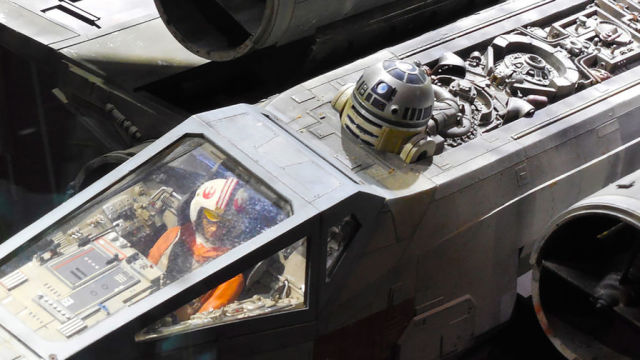artificial intelligence for the first time during the flight replaced the co-pilot of the us air force aircraft
This week, the artificial intelligence artuid, created on the basis of an algorithm for playing chess, acted as a co-pilot during a training flight of the U-2 aircraft. The US Air Force expects that this AI can be modified for use on other models of combat aircraft. The development of artificial intelligence has already become one of the key areas of the Pentagon's innovation programs.
In the United States, an artificial intelligence has been prepared, the purpose of which is to perform the functions of a co - pilot on a high-altitude U-2 reconnaissance aircraft. During the December 15 flight, the AI solved tasks that are usually performed only by the pilot.
The artificial intelligence was probably named after the character of the Star Wars saga robot R2-D2, who also served as a co-pilot in the flights of the main character of the original Luke Skywalker trilogy. The name of a real American AI sounds a little shorter - just R2 or artu.
The training flight (UTP) of the U-2 aircraft with reconnaissance purposes was carried out from the US Air Force base Bill in California. During the flight, artu was tasked with detecting missile launchers of a likely enemy, and to do this during a simulated missile strike. The artificial intelligence on board the U-2 was solely responsible for the use of sensors and tactical navigation after takeoff, the US Air Force said in a release.
The U-2R Dragon Lady ("Lady Dragon") used for the flight belongs to the 99th expeditionary reconnaissance Squadron. This unit, according to the publication Defense News, is trying to become a kind of Silicon Valley of the US Air Force for testing promising technologies.
Meanwhile, the U-2 is one of the oldest aircraft of the US Air Force, which began flying since the 1950s. U-2 pilots at Bill Air Force Base can still operate an aircraft developed more than 60 years ago. The U-2 scout flies so high that American aviators still use pressurized spacesuits to fly. But now they also wear a Garmin D2 watch and bring tablets with them to the cockpit, writes Defense News.
During the first flight with artu, the U-2 pilot, who for security reasons is referred to only by the call sign "Voodoo", focused on finding enemy aircraft and shared the use of an on-board locator with an artificial intelligence acting as a co-pilot.
"Understanding them to prepare humans and artificial intelligence for a new era of algorithmic warfare is our next important step. We're either going to be science fiction or we're going to be history, " Roper said.
Will Roper explained in an article in Popular Mechanics.
Although the artux was designed to make it easier for a pilot to operate in the U-2, it can be modified for use on other combat aircraft, the US Air Force said.
"We know that in order to fight and win a future conflict with an equal opponent, we must have a decisive digital advantage," U.S. Air Force Chief of Staff General Charles K. Brown said in a statement.
"Artificial intelligence will play a crucial role in achieving this advantage, so I'm incredibly proud of what the development team has achieved. We need to accelerate change, and this only happens when our pilots go beyond what we thought was possible, " the military commander added.
It is well known how much attention is paid in the United States to preserving or restoring America's technological advantages. As previously written "Newspaper.en", as america's strategic competitors develop advanced weapons, equipment and technology, the united states risks losing its comparative advantage - and in some cases, such cases are already being noted.
The National Defense Appropriations Act for fiscal year 2021 directs additional investment in innovation. Washington's goal is to implement a knowledge-based policy, with a particular focus on technological areas that are considered critical to the US national defense: hypersonic weapons, artificial intelligence, directed energy, quantum computing, biotechnology, and others.
In this regard, one of the main tasks of the Pentagon is to maintain the US leadership in research and development of artificial intelligence and accelerate the research and development of the US Department of Defense in the field of AI.
Mikhail Khodarenok

